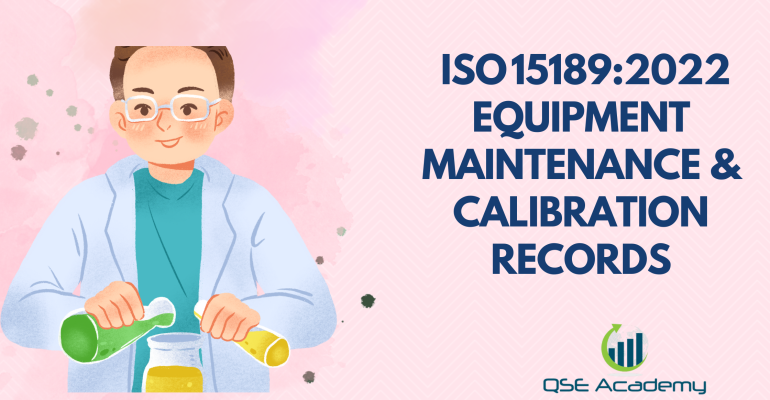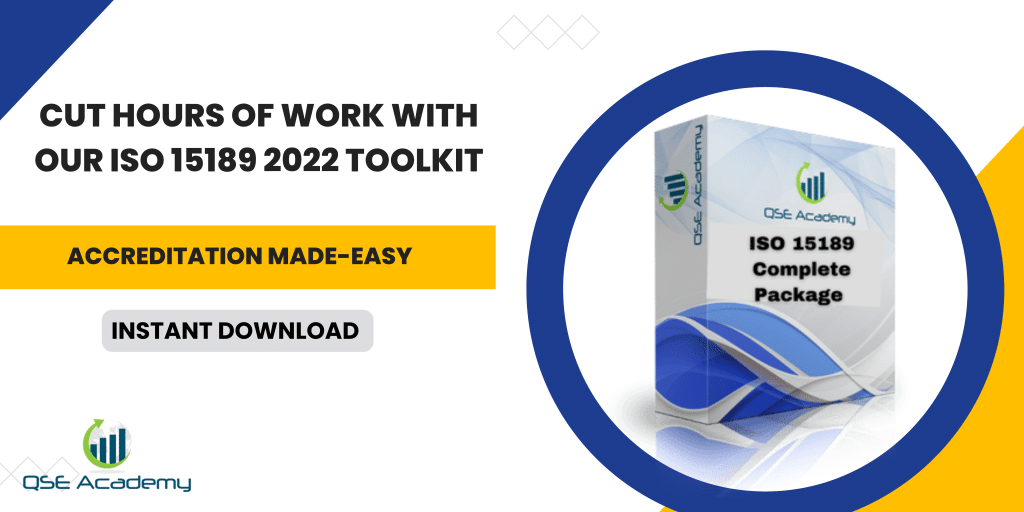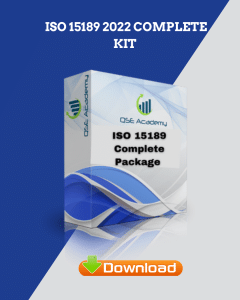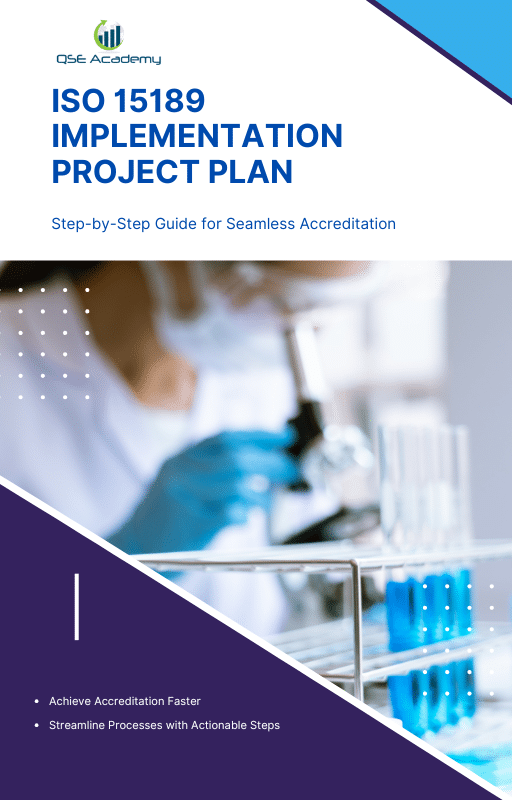ISO 15189:2022 Equipment Maintenance & Calibration Records
Last Updated on October 22, 2025 by Hafsa J.
Why Equipment Maintenance and Calibration Matter Under ISO 15189:2022
In every lab I’ve worked with, equipment issues are at the heart of most audit findings. Not because the instruments fail — but because the records behind them do. A missed calibration date here, an unrecorded service there — and suddenly, your test results lose credibility.
Here’s what I’ve noticed: maintaining your analyzers, pipettes, and thermometers is only half the job. The other half is documenting that maintenance and calibration properly, in a way that ISO 15189:2022 recognizes as traceable, controlled, and verifiable.
This article walks you through how to build a strong equipment control system. You’ll learn how to:
-
Set up ISO 15189-compliant maintenance and calibration programs.
-
Keep records that prove reliability during audits.
-
Use templates that simplify compliance and make evidence easy to find.
By the end, you’ll know exactly how to turn your logs and calibration certificates into solid proof that your results can be trusted.
Understanding ISO 15189:2022 Requirements for Equipment Control
When auditors review a laboratory’s equipment management system, they’re not just checking if instruments are working — they’re checking whether you can prove that those instruments produce reliable results, every single time.
ISO 15189:2022 lays out this expectation clearly in Clause 6.4, which focuses on equipment, reagents, and consumables. The standard doesn’t just want functioning machines; it wants traceable evidence that every instrument used in testing is maintained, calibrated, and verified at defined intervals.
Here’s how the key clauses connect:
| Clause | Requirement Summary | Purpose |
|---|---|---|
| 6.4.3 | Equipment must be uniquely identified and maintained in a controlled system. | Ensures every item can be traced through its lifecycle. |
| 6.4.5 | Equipment must be calibrated or verified against reference standards before use. | Confirms measurement accuracy and reliability. |
| 6.4.6 | Records must show maintenance, calibration, and performance verification. | Provides proof of ongoing control and traceability. |
| 7.3 & 7.5.2 | Methods rely on calibrated, properly maintained equipment. | Connects equipment reliability directly to method validity. |
In other words — your calibration log is just as important as your test result. If an instrument isn’t properly maintained or calibrated, every test performed on it becomes questionable in the eyes of an assessor.
Pro Tip:
Treat calibration as proving accuracy, and maintenance as preserving it. They work together — you can’t skip one without undermining the other.
Common Pitfall:
Many labs file away manufacturer service reports and assume they’re covered. They’re not. ISO 15189 expects your lab to demonstrate control between those visits — meaning you track, schedule, and verify your equipment performance continually.
In my experience:
The labs that impress auditors most are the ones that can trace any analyzer’s full history — when it was last serviced, who did it, what was checked, and when it’s due again. That level of visibility shows real system control.
Setting Up an Equipment Maintenance Program
A strong maintenance program is what keeps your laboratory running smoothly — and your audit results clean. ISO 15189:2022 expects every piece of equipment that affects test quality to be maintained according to a defined schedule. That means no “as-needed” fixes or forgotten service dates.
Here’s how to build a reliable system from the ground up.
1. Create an Equipment Master List
Start with a central register that includes:
-
Equipment ID and name
-
Model, serial number, and manufacturer
-
Location and responsible person
-
Last and next maintenance dates
-
Calibration status
This list becomes your master control record. Every maintenance log and calibration certificate should trace back to it.
Pro Tip:
Add a “Status” column (Active, Out of Service, Decommissioned). It helps auditors instantly see which instruments are in use.
2. Define Maintenance Frequency
Base your schedule on:
-
Manufacturer recommendations
-
Usage intensity
-
Environmental factors (humidity, vibration, temperature)
-
Historical performance
Document your reasoning — even a one-sentence justification like “quarterly preventive maintenance due to high daily workload” shows you’ve made a risk-based decision.
3. Assign Clear Responsibilities
Specify who performs maintenance and who verifies it.
-
Technicians handle daily or routine cleaning.
-
Service providers handle preventive or corrective maintenance.
-
Quality staff verify completion and update records.
Accountability prevents “assumed” tasks from slipping through the cracks.
4. Schedule Preventive Maintenance
Don’t wait for equipment to fail. Plan ahead.
Use a shared calendar or reminder system to flag upcoming maintenance dates.
Pro Tip:
Color-code due dates:
-
Green = up to date
-
Yellow = due soon
-
Red = overdue
Auditors appreciate this kind of visual control — it shows real-time awareness of your maintenance program.
5. Document Everything
Every maintenance action, no matter how small, must be recorded. Include:
-
What was done
-
When it was done
-
Who did it
-
Any parts replaced or issues found
-
Verification signature
In my experience:
A microbiology lab I worked with reduced equipment breakdowns by nearly half once they started logging every maintenance task — even daily cleanings. Over time, those small records built a pattern of reliability that impressed assessors.
Building a Calibration Program that Meets ISO 15189
If maintenance keeps your equipment running, calibration keeps it honest. ISO 15189:2022 places heavy emphasis on calibration because it directly affects the accuracy of every test result you produce. In simple terms, calibration is how you prove your instruments measure what they’re supposed to — and within the limits your methods require.
Here’s how to set up a calibration system that stands up to any auditor.
1. Establish Calibration Requirements
Start by identifying which instruments require calibration and how often.
This usually includes:
-
Analytical instruments (balances, spectrophotometers, thermometers)
-
Measuring devices (pipettes, timers, pressure gauges)
-
Environmental monitors (incubators, refrigerators, freezers)
Base your intervals on:
-
Manufacturer guidance
-
Frequency of use
-
Measurement criticality
-
History of performance
Pro Tip:
Don’t rely on the manufacturer’s schedule alone. ISO 15189 expects you to make risk-based decisions. For high-impact equipment, consider shorter intervals or periodic checks between calibrations.
2. Ensure Traceability to National or International Standards
Calibration must be traceable — meaning there’s an unbroken chain of comparisons leading to a recognized standard (like NIST or SI units).
When outsourcing calibration:
-
Use accredited calibration providers (ISO/IEC 17025 certified).
-
Verify the scope on their certificate covers your instrument type.
-
Check that calibration results include measurement uncertainty and reference standards used.
Common Mistake:
Labs often file calibration certificates without reviewing them. Always check for validity dates, results, and measurement units. If something looks inconsistent, note it in your record review.
3. Record Adjustments and Verification Results
Every calibration should document:
-
Pre-adjustment readings
-
Post-adjustment readings
-
Verification results
-
Decision on whether the equipment is within specification
If an adjustment was needed, include details of what changed and who approved the action.
Pro Tip:
Keep both the certificate and your internal review together. Add a note that says, “Certificate reviewed and verified by [Name], Date.” It proves your lab actively evaluates calibration data, not just archives it.
4. Perform Intermediate Checks
Between full calibrations, perform simple verifications to confirm the instrument still works correctly.
For example:
-
Check balances weekly using reference weights.
-
Verify thermometers with a reference thermometer.
-
Confirm pipette accuracy using gravimetric checks.
These quick checks catch small drifts before they become big problems.
5. Manage Out-of-Tolerance Equipment
If a calibration fails, immediately:
-
Label the equipment “Out of Service.”
-
Investigate potential impact on test results.
-
Take corrective actions (retesting, re-calibration, or data review).
-
Document the root cause and resolution.
In my experience:
One pathology lab caught a temperature calibration drift in their incubator two weeks before an external audit. Because they documented the issue, investigation, and verification of unaffected samples, the auditor praised their system as “proactive and transparent.”
A good calibration program doesn’t just protect your results — it protects your credibility. The key is traceability, consistency, and proof that your lab reviews and reacts to data, not just records it.
Designing Effective Equipment Records & Logs
When it comes to ISO 15189 compliance, your equipment logs are your evidence. You can have the best maintenance and calibration systems in the world, but if the records are incomplete or unclear, assessors will treat it as if the work was never done.
A well-designed record system tells a clear story — what equipment you have, what’s been done to it, when, and by whom. It should be easy to read, easy to trace, and impossible to misinterpret.
What Every Equipment Record Should Include
| Field | What to Record | Why It Matters |
|---|---|---|
| Equipment ID & Description | Unique ID linked to your master list. | Prevents mix-ups and ensures traceability. |
| Location & Owner | Exact area and responsible person. | Shows accountability. |
| Service or Calibration Date | The date work was completed. | Establishes traceable history. |
| Service or Calibration Details | Type of work performed, parameters checked, reference standards used. | Demonstrates control and technical integrity. |
| Performed By / Provider | Name of technician or service company. | Confirms authorized personnel performed the work. |
| Results / Findings | “Pass,” “Within Tolerance,” or actual measurement data. | Provides evidence of performance. |
| Next Due Date | When the next service or calibration is scheduled. | Ensures continuity and planning. |
| Verification / Approval Signature | Reviewed by a supervisor or quality officer. | Shows oversight and internal control. |
Pro Tip:
Keep your logs simple and standardized across all departments. Use the same layout for balances, incubators, and spectrophotometers. It helps staff complete forms correctly and speeds up audits because assessors see a familiar structure every time.
Paper or Digital?
Both can work — what matters is consistency and control.
-
Paper logs are easy for daily entries but can be misplaced or misread.
-
Digital logs offer reminders, version control, and easier retrieval.
If you use digital systems, lock fields for mandatory data (date, signature, equipment ID) and create automatic alerts for upcoming calibration or maintenance dates.
In My Experience:
A clinical chemistry lab I supported switched from scattered spreadsheets to a single shared digital tracker. Each instrument had a record with automatic color-coded status:
-
Green = up to date
-
Yellow = due soon
-
Red = overdue
During their next assessment, the auditor reviewed their tracker and said, “This is exactly how equipment control should look — simple, visible, and verifiable.”
That’s the goal — not complicated systems, just organized, consistent, and trustworthy records.
Templates for Equipment Maintenance & Calibration Records
Templates are the backbone of consistency. They make sure every technician records the same details, in the same order, every time. Without them, you end up with incomplete notes, missing signatures, or inconsistent data — the kind of small errors that can become big audit findings.
A good template does three things:
-
Guides the user through exactly what to document.
-
Creates uniformity across all departments.
-
Makes review and retrieval easy for auditors.
Here’s how to structure the essential templates your lab should have.
1. Equipment Master List Template
Purpose: To provide a single source of truth for all instruments under your laboratory’s control.
Key Fields:
-
Equipment ID, name, and model
-
Serial number and location
-
Responsible person
-
Maintenance frequency
-
Calibration frequency
-
Status (Active, In Use, Out of Service)
-
Last and next due dates
Pro Tip:
Add a “Calibration Certificate Reference” column — linking each piece of equipment to its last calibration record keeps traceability tight.
2. Maintenance Log Template
Purpose: To track every maintenance action, from daily cleaning to annual servicing.
Key Fields:
-
Equipment ID
-
Date of maintenance
-
Type (daily, preventive, corrective)
-
Description of work done
-
Performed by (name/signature)
-
Verified by (supervisor/quality officer)
-
Next due date
Common Mistake:
Leaving out “Verified By.” Every maintenance activity must be checked and signed off to show it was reviewed.
3. Calibration Record Template
Purpose: To record calibration activities and confirm measurement accuracy.
Key Fields:
-
Equipment ID and serial number
-
Calibration date and due date
-
Reference standard used (with serial number)
-
Calibration results (pre- and post-adjustment)
-
Uncertainty or tolerance limits
-
Performed by and verified by
-
Certificate number and supplier name
Pro Tip:
Attach calibration certificates to this record and include a brief internal review statement: “Certificate reviewed by [Name], no discrepancies noted.” It shows active oversight.
4. Corrective Action Log Template
Purpose: To document and resolve any issues found during maintenance or calibration.
Key Fields:
-
Equipment ID and description
-
Nonconformity or problem detected
-
Immediate action taken
-
Root cause (if identified)
-
Corrective action implemented
-
Verification of effectiveness
-
Reviewed and approved by
In My Experience:
Labs that maintain this log consistently earn positive audit remarks. It proves that the team doesn’t just react to issues — they investigate and improve their system.
Summary Table:
| Template Name | Purpose | Main Benefit |
|---|---|---|
| Equipment Master List | Centralized inventory | Traceability |
| Maintenance Log | Track preventive and corrective work | Accountability |
| Calibration Record | Record performance checks | Accuracy & reliability |
| Corrective Action Log | Manage deviations | Continuous improvement |
A complete, standardized template set makes compliance smoother, saves staff time, and provides exactly what auditors want — clear, consistent, and traceable documentation.
Managing Out-of-Tolerance and Failed Calibrations
No lab wants to see “failed calibration” written in a report — but it happens. What matters isn’t that the instrument failed; it’s how you respond. ISO 15189:2022 expects you to demonstrate control, traceability, and corrective action when any piece of equipment goes out of tolerance.
Here’s how to handle it the right way.
1. Isolate the Equipment Immediately
As soon as a calibration or verification shows that an instrument is out of tolerance, remove it from service.
Label it clearly — “OUT OF SERVICE – DO NOT USE” — and, if possible, disconnect it from routine workflows.
This quick action prevents inaccurate results from entering your reporting system.
Pro Tip:
Keep pre-printed red “Out of Service” tags in your lab. Auditors appreciate visible proof that your team responds promptly to issues.
2. Assess the Impact
Determine whether the equipment was used for testing while it was out of tolerance. If it was, evaluate how far back the problem could have affected results.
Ask:
-
When was the last confirmed accurate calibration?
-
What samples were analyzed since then?
-
Could the deviation have influenced patient or client results?
Document this review in a short Impact Assessment Form — it’s one of the first things auditors will request.
3. Investigate and Correct the Problem
Find out why the calibration failed.
Common causes include:
-
Normal wear or drift over time
-
Incorrect handling or cleaning
-
Faulty replacement parts
-
Poor environmental conditions
Once you’ve identified the cause, decide on the corrective action — repair, re-calibration, or equipment replacement.
In My Experience:
One biochemistry lab traced repeated calibration failures to unstable room temperature near their spectrophotometer. A simple relocation fixed the issue permanently — and their next audit went flawlessly.
4. Re-Verify After Correction
After corrective action, perform a re-calibration or verification check before putting the instrument back into service.
Record the results clearly and confirm that performance has returned to acceptable limits.
Have the Quality Manager or designated reviewer sign off on the re-verification before the instrument is released.
5. Document Everything
The golden rule: if it’s not documented, it didn’t happen.
Keep all related evidence together — failed calibration results, investigation notes, corrective actions, and re-verification outcomes.
Use your Corrective Action Log to summarize the event and reference the supporting records.
Pro Tip:
When assessors see a failed calibration fully documented with quick containment and clear evidence of review, they don’t treat it as a weakness — they see it as proof of a mature quality system.
Linking Equipment Records with Other QMS Elements
In ISO 15189:2022, equipment control doesn’t stand alone. It’s part of a broader quality ecosystem — everything connects. Your maintenance and calibration records influence how you manage risks, validate methods, train personnel, and even conduct internal audits.
Understanding these links helps you build a QMS that’s not only compliant, but genuinely effective.
1. Risk Management (Clause 8.5)
Faulty or poorly maintained equipment is one of the most common laboratory risks.
Your maintenance and calibration logs are direct inputs to your risk management program.
Ask questions like:
-
What would happen if this analyzer failed mid-run?
-
How often do we see deviations in calibration results?
-
Do we have backup equipment for critical functions?
Pro Tip:
Use your equipment data to update your risk register. Recurrent equipment issues might signal the need for procedural changes or preventive investment.
2. Method Validation and Verification (Clause 7.3)
Every validation or verification relies on equipment performance. If the instrument used wasn’t properly calibrated, the entire validation becomes questionable.
Cross-reference calibration records with your validation reports to show traceability. For example, include the equipment ID and calibration certificate number in your validation documentation.
In My Experience:
One lab lost three weeks redoing a validation simply because they couldn’t prove the balance used was calibrated at the time. Since then, they link calibration certificates directly to every validation file — and audits have been seamless.
3. Personnel Training and Competence (Clause 6.2)
Well-documented maintenance and calibration logs support training programs. Staff should be trained not only to perform their tasks, but also to record them properly.
When training records and equipment logs line up — showing who did what and when — it demonstrates competence and accountability.
Pro Tip:
Use real maintenance and calibration tasks as part of staff competence assessments. It’s both practical and auditable.
4. Document Control (Clause 8.3)
Procedures for equipment operation, cleaning, calibration, and maintenance are controlled documents. Make sure the procedures referenced in your records are always the latest approved versions.
Version mismatches are easy for auditors to spot — and they suggest poor control.
5. Internal Audits and Management Review (Clauses 8.6 & 8.9)
Your equipment records are valuable data sources during audits and reviews.
Use them to:
-
Track overdue calibrations or maintenance.
-
Identify recurring equipment issues.
-
Support resource planning and budget requests.
Pro Tip:
During management reviews, include a summary chart of calibration compliance rates — for example, “98 % on-time calibration completion this quarter.” It’s a simple, powerful indicator of control.
Everything in your lab connects back to equipment reliability. By aligning your maintenance and calibration records with these other QMS elements, you turn documentation into evidence — and evidence into confidence.
Real-World Example – How Proper Equipment Records Saved a Lab
A few years ago, I helped a hematology lab that was preparing for its ISO 15189 re-accreditation audit. A week before the assessment, one of their analyzers failed calibration. Naturally, panic set in — they’d just run dozens of patient samples that week.
Here’s where their documentation made all the difference.
They immediately isolated the instrument, tagged it “Out of Service,” and launched an impact assessment using their established form. Within hours, they had:
-
Identified all tests affected since the last valid calibration.
-
Verified backup equipment results for comparison.
-
Recorded the corrective action (re-calibration and repeat testing).
-
Documented the review and sign-off by the Quality Manager.
When the assessor arrived, they didn’t hide the issue — they presented the full paper trail. The auditor’s comment was simple:
“This is exactly how an ISO 15189-compliant lab should respond — transparent, evidence-based, and controlled.”
Because they acted quickly and documented everything, the event was recorded as a positive example of risk-based thinking, not a nonconformity.
Lesson:
Equipment problems happen in every lab. What separates a mature laboratory from the rest is documentation that shows awareness, control, and accountability.
The better your maintenance and calibration records, the more confident your auditors — and your clients — will be in your results.
FAQs – Equipment Maintenance and Calibration Under ISO 15189
Q1: Are manufacturer service reports enough for ISO 15189 compliance?
No. Manufacturer reports are useful, but they only prove that the service was performed — not that your lab is in control. ISO 15189 requires your own records showing:
-
The date maintenance was performed.
-
Who reviewed and verified the work.
-
When the next service is due.
Your lab must demonstrate ownership of equipment control, not just reliance on external providers.
Q2: How often should we calibrate our instruments?
The standard doesn’t set fixed intervals because it depends on risk and usage.
Start with manufacturer recommendations, then adjust based on:
-
Frequency of use.
-
Historical drift or failures.
-
Environmental conditions.
-
Criticality of measurement.
Pro Tip:
Review calibration trends annually — if data show stable performance, you may safely extend intervals. If drift appears, shorten them.
Q3: What should we do when a calibration fails?
Immediately remove the equipment from use and label it clearly. Then:
-
Investigate why it failed.
-
Assess the impact on results.
-
Take corrective action (repair, re-calibrate, retest).
-
Document every step, including re-verification.
A well-documented failure followed by sound corrective action demonstrates control — not weakness.
Q4: Can small devices like pipettes and timers be excluded from calibration?
No, not if they affect test accuracy. Even small tools must be checked periodically. You can perform internal verifications with reference standards, but you still need to record those checks.
In My Experience:
Labs that neglect small devices often end up with surprising nonconformities. Assessors view consistent control of all measuring equipment as a sign of system maturity.
Q5: Should we keep calibration certificates forever?
Keep them at least as long as the equipment is in use, plus the record retention period required by your accrediting body — typically five years.
For decommissioned equipment, retain the last calibration and service record as part of the historical file. It demonstrates full traceability if questions arise later.
Prove Reliability Through Records, Not Words
ISO 15189:2022 doesn’t reward laboratories for having the newest instruments — it rewards those that can prove their instruments are accurate, maintained, and controlled. Your equipment records are that proof. They tell the story of reliability, consistency, and responsibility.
Every calibration certificate, maintenance log, and corrective action note is a piece of evidence that your lab delivers trustworthy results. When these records are clear, complete, and traceable, auditors don’t have to take your word for it — the evidence speaks for you.
Here’s what I’ve seen in top-performing laboratories:
-
Equipment master lists that show instant visibility of status.
-
Maintenance and calibration logs reviewed and signed off promptly.
-
Clear containment and impact assessments when problems occur.
-
Digital tracking systems that make retrieval effortless during audits.
These labs don’t just meet ISO 15189 — they build confidence with clients, regulators, and their own staff.
If you’re setting up or improving your equipment program, start with structure. Standardize your logs, simplify your templates, and make traceability second nature.
Next Step:
Download QSE Academy’s ISO 15189:2022 Equipment Maintenance & Calibration Record Template Pack — a ready-to-use toolkit designed to help you document, monitor, and prove equipment control with zero guesswork.
Because at the end of the day, compliance isn’t about how well you talk about quality — it’s about how well you can show it.
Whether it’s ISO 9001, ISO 22000, or the cosmetics-focused ISO 22716, I’ve spent my career I’m not here to call myself an expert—I prefer “enthusiast” because I truly love what I do. When I’m not writing about standards, you’ll probably find me playing Piano 🎹, connecting with people, or diving into my next big project💫. I’m an engineer specialized in the food and agricultural industry
make ISO standards less intimidating and more approachable for everyone.
turning complex jargon into clear, actionable steps that businesses can actually use.
There’s something incredibly rewarding about helping people navigate food safety and quality management systems
in a way that feels simple, practical, and even enjoyable.
I have a Master’s in QHSE management and over 12 years of experience as a Quality Manager
I’ve helped more than 15 companies implement ISO 9001, ISO 22000, ISO 22716, GMP, and other standards
My clients include food producers, cosmetics manufacturers, laboratories, and service companies
I believe quality systems should be simple, useful, and efficient.













